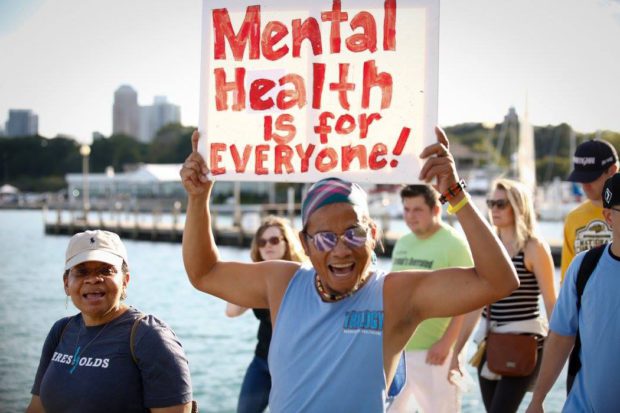
Teen suicide and depression rates amid the pandemic are as alarming as deaths from Covid-19, but few mental health resources are available to address this shadow pandemic, especially within communities of color.
Suicide is the leading cause of death for Asian American children between the ages of 15 and 24. Black children between the ages of 5 and 12 are twice as likely to die by suicide as White children of the same age. Amid the pandemic, 42% of LGBTQ youth seriously considered or attempted suicide, including more than half of transgender and non-binary youth.
Children as young as eight have attempted suicide.
U.S. Surgeon General Vivek Murthy issued an advisory on Dec. 7 highlighting the need to address the youth mental health crisis. Early estimates in 2020 show 6,600 youth suicide deaths in 2020, a 57% jump over the previous decade. Moreover, 40% of children ages 10–24 expressed feelings of sadness and hopelessness.
The surgeon general noted that disabled, low-income and homeless youth, along with minorities and LGBTQ youth, had suffered from greater rates of depression.
Dr. Lori Turk-Bicakci, senior program director for KidsData—an initiative of the Population Resource Bureau—noted at a Dec. 11 news briefing organized by Ethnic Media Services that emergency room visits for attempted suicide by girls increased 51%, and 40% for boys, beginning in May 2020.
“This really feels like a crisis,” stated Turk-Bicakci. She noted that even before the pandemic, not all youth were able to get the services they needed for their mental health conditions. “And now the need is even greater. Mental health providers have been inundated with referrals.”
Typically, there is a three-month wait to get a spot in treatment programs.
Other speakers at the briefing included Michelle Doty Cabrera, executive director, County Behavioral Health Directors Association; Dr. LaTonya Wood, director of clinical training for the Psy.D. Program, Graduate School of Education and Psychology at Pepperdine University; Ulash Thakore-Dunlap, a marriage and family therapist and past board member of MySahana; and Gabii LeGate, director of operations at Blossoming Minds.
“In addition to grappling with the grief and loss of loved ones, Black youth, rightfully, are also experiencing an increased fear and anxiety about their own health and well-being,” said Wood.
She noted that loss of household income, increased food insecurity, school closures and racial unrest during the summer of 2020 all contributed to heightened anxiety, depression and suicide among Black youth. Moreover, traditional safety nets of church, school and peers largely disappeared amid the pandemic.
Wood noted there are few culturally appropriate mental health resources: Less than 4% of mental health practitioners identify as Black.
A spike of racially motivated attacks targeted at Asian Americans, along with being blamed by former President Donald Trump for the spread of Covid-19, has created hyper-anxiety and depression among Asian American teens, said Thakore-Dunlap, noting that many youths witnessed their parents and grandparents being verbally or physically abused and worried for their own safety.
Many youths may want to access mental health services, but they have to struggle with their parents, who might not understand the importance of counseling and mental health for their well-being, said Thakore-Dunlap, noting that AAPIs have the lowest rate of accessing mental health services.
Immigrant youth, who are struggling with conflicts as they navigate to a different culture, are also at high risk for attempting suicide, she said.
Thakore-Dunlap advocated for graduate degree programs to become more accessible for low-income students and broaden the pipeline of students enrolled in peer certification programs.
In 2020, 73% of LGBTQ youth stated that their mental health was poor, said LeGate, drawing upon data released by the Trevor Project. “Most of us have struggled with depression or anxiety, or a general feeling of helplessness, dealing with something that we know nothing about,” she said.
Almost half of the youth surveyed by the Trevor Project said they had sought out professional help but were unable to obtain it.
Health insurance can be a barrier to accessing mental health, said LeGate, noting that most children under 18 are covered by their parents’ insurance. “Not everyone feels comfortable or safe telling their family that they need therapy or mental health services,” she said.
Cabrera said that amid the pandemic, children were often in homes where there is neglect or domestic violence. “We did not have mandated reporters able to connect those children and youth with help during the pandemic. We didn’t know that they were in trouble unless they somehow figured out a way to reach us.”
“The flip side is when children and youth go to school, they experience social pressure or other kinds of bullying and adults who may treat them unfairly, discrimination and bullying, which may also result in crisis,” said Cabrera.
“People with behavioral health conditions, it’s as normal a thing as experiencing a broken arm or having any other health condition. And so I would just encourage us all to really support young people, listening to them about what they need,” said Cabrera.
*****
